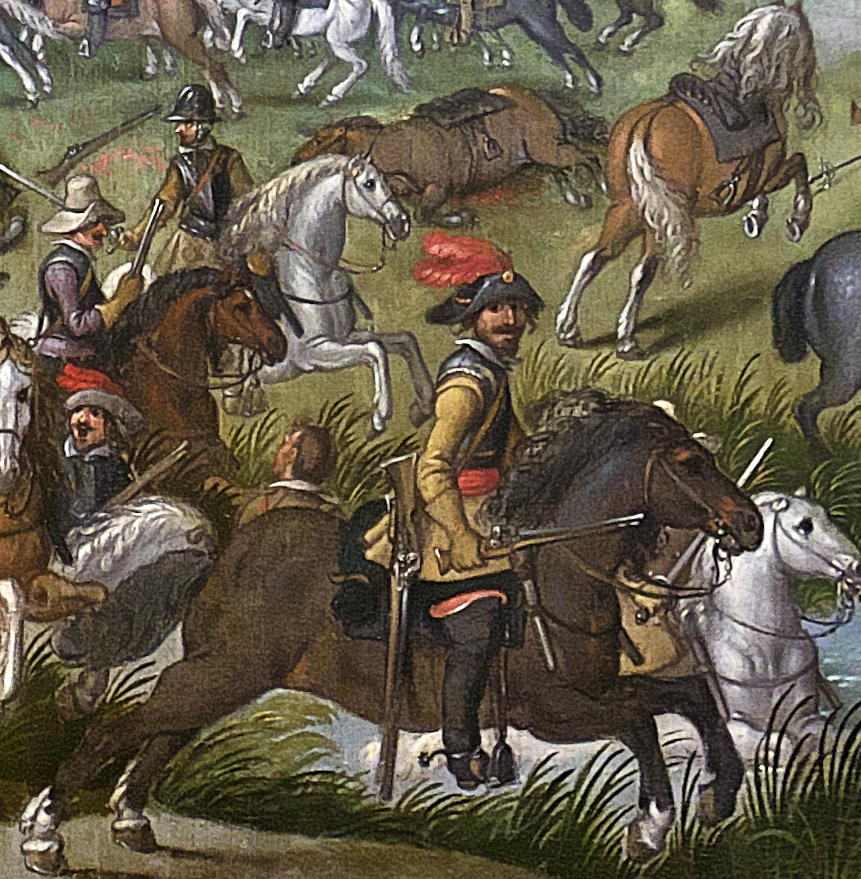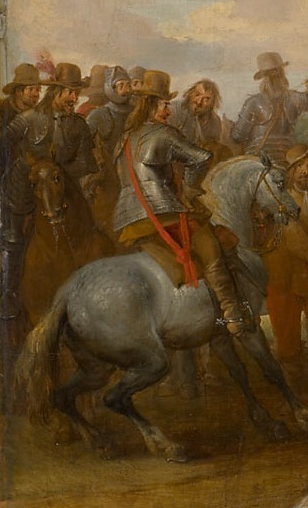Salvete Omnes,
back to the XVII century - our northern European part of the Eurasian continent.
So Courland & Semigallia, a westerly region within today's Latvia, was a duchy and fiefdom of Polish-Lithuanian Commonwealth from 1569AD.
In the early XVII century the duchy was ruled by two dukes Friedrich (Frederic)(1567- ) and his brother Wilhelm (1574- ), sons of the former Grand Master of the Latvian Order Gotthard Ketler, the first ruler of this post-Livonian Order & Livonian Confederation statelet.
Dukes Friedrich and Wilhelm ruled during the time when Polish-Lithuanian Commonwealth entered into the more than 60 year period of wars against the Swedish Kingdom for the southern and south eastern Baltic provinces of Polish realm. You can, if you read Polish or by using translator, read Polish researcher Mariusz Balcerek's work Ksiestwo Kurlandii i Semigalii w wojnie Rzeczypospolitej ze Szwecja w latach 1600-1629 (The Duchy of Courland and Semigallia in the War between the Polish-Lithuanian Commonwealth and Sweden in years 1600-16290 published in 2012 - available for reading or download on Academia. There are good maps in this book, so it has many uses for any researcher. (I will point to pages in this book, writing Balcerek, Ksiestwo.. p..)
Duke Friedrich commanded a sizeable contingent of Courland's levy in the summer of 1605, when the Swedish army landed in Courland. Duke had initiated action before our grand hetman Jan Karol Chodkiewicz with his Commonwealth army appeared on the front. During the Kircholm campaign duke Friedrich joined Chodkiewicz' army with a number of cavalrymen - pistoliers aka reiters. Duke himself wrote about three banners/companies(300-400?) that he took to Kircholm. Also a number of noblemen horsemen (a 100?) from Plityn/Piltene, separate from duke's reiters, took part in the battle, before having crossed the difficult ford across Western Dvina River. Their participation was important and significant, and they gave examples of bravery, sacrifice and heroism, losing brave commanders and horsemen like Sacken,Meden and brothers Dietrich and Ernst Brunnawen (Balcerek, Ksiestwo,p.102-121 ).
The Pistol armed cavalry was a norm during the last 60 years in the German-speaking theaters of war in Europe. It quite agreed among the researcher that the German reiters made this short firearm the weapon for cavalryman of the period and of the future. And this rather short-range effective firearms served well when in close-quarters combat. Reiters aka Pistoliers used wheel-lock weapons, and also other types available then like snaphance pistols and carbine.
It is believed that duke Friedrich received a gift, a pair or brace of snaphance pistols, from king James I, king of England, Wales and Scotland in 1615. And that in 1616 duke of Courland gifted these pistols to elector of Saxony, prince Johan Georg.
One of the surviving pistols is part of the Metropolitan Museum of Arts (NY, USA) arms and armor collection. And the other pistol is at Dresden, Federal Republic of German. From the MET from there we got some nice photos of this splendid pistol
another Scottish snaphance pistol from Chicago museum.
Valete















No comments:
Post a Comment